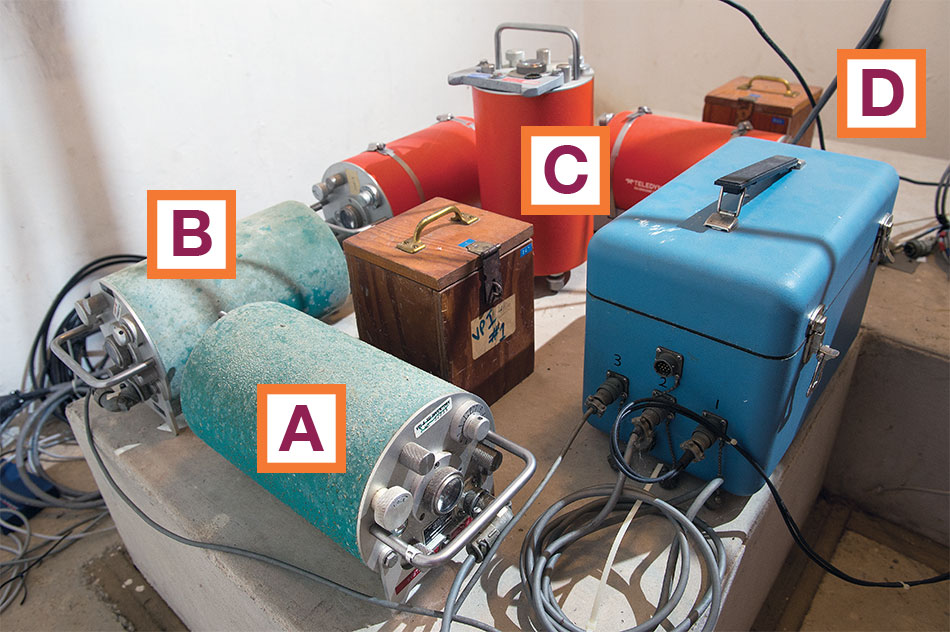Audio gallery by Jordan Fifer | Visual and Broadcast Communications
Seismic notes
by Jesse Tuel
In a two-family, Cold War-era bomb shelter near the intersection of U.S. Route 460 and the Huckleberry Trail, atop piers resting on bedrock 5 feet below, is an array of seismic systems that has yielded a continuous recording of the Earth's tectonic gyrations since September 1963.
When the U.S. and Russia agreed to discontinue atmospheric nuclear testing, the nukes went underground—and elevated the status of seismography. The late Professor Emeritus Charles Sears (mining geology '32, M.S. '35), founder of the Virginia Tech Seismological Observatory, secured one of 220 sites for the new World-Wide Standardized Seismograph Network, and that site has since generated the most continuous data—perhaps rivaled by only one other site in Albuquerque, New Mexico, said Martin Chapman, the College of Science research associate professor of geophysics who maintains the observatory today.
A short-period instrument cluster (below) gauges seismic activity on the higher end of the spectrum, such as vehicle traffic increasing around 7 a.m.

(A) North-south vibrations, (B) east-west vibrations, and (C) vertical movement yield a triaxial picture of motion. Signals are merged into one wire (D), and the data are sent to a computer that digitizes and time-stamps the incoming voltage signals, automatically transmitting data to the U.S. Geological Survey and to Chapman's office.
In an adjacent room, a modern broadband instrument captures the lower end of the seismic spectrum. When a 9.0 quake, triggered the 2004 Southeast Asian tsunami, the device catalogued Blacksburg moving 0.6 inches to the west in a period of about 4 minutes and then returning to equilibrium. The Earth continued shaking for four days. "The Earth just rings like a gong when you get an earthquake that big," Chapman said.

Earthquake data compiled by the Virginia Tech Seismological Observatory →
Around the Drillfield
- Athletics
- Corps of Cadets
- How Tech Ticks
- Moment
- Ology
- Philanthropy
- Question
- What's In It?